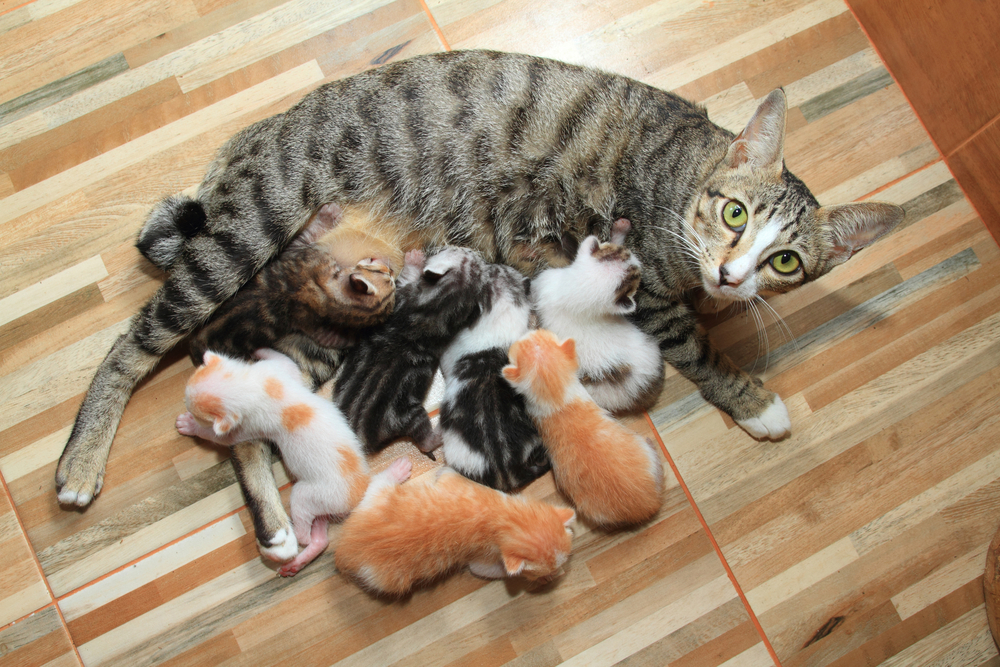You may be unsure about having your pet spayed or neutered, or you might wonder about the ideal age at which age your four-legged friend should be sterilized to reap the most health benefits. If you are on the fence about your pet’s reproductive procedure, read our Aloha Veterinary Hospital team’s guide to the five perks of spaying or neutering.
#1: Spaying or neutering your pet reduces their reproductive cancer risks
A key benefit of spaying or neutering your pet is the reduction or elimination of their risk for developing reproductive cancers. For example, neutering your male pet eliminates their testicular cancer risk, and can also reduce their potential for developing various prostate problems.
Spaying your female pet greatly reduces their potential for developing mammary cancer, with 50% of tumors being malignant in dogs, and 90% being malignant in cats. Spaying your dog at the correct time can virtually eliminate her mammary cancer risk. According to the American College of Veterinary Surgeons, your dog’s mammary cancer risk is 0.5% if spayed before her first heat cycle. After the second heat cycle, her risk skyrockets to 26%.
The appropriate age for having your female dog spayed varies. However, you should generally have your female cat spayed by 6 months of age, which is typically right before their first heat cycle, and allows plenty of time for their hormones to help ensure a healthy growth rate.
#2: Spaying or neutering your pet eliminates their mating urge
A pet driven by their hormonal urge to reproduce can get into a lot of trouble, plus they can develop some obnoxious behaviors that a sterilization procedure will eliminate. By having your pet spayed or neutered, you help prevent your furry pal’s urge to roam, reducing their desire to bolt out open doors, dig under fences, or slip their collar to find a mate, which helps them avoid being struck by a vehicle, getting into a fight with another animal, or becoming lost.
Neutering your male dog can reduce or eliminate their urge to mount other pets, people, and inanimate objects. Spaying your female pet eliminates their heat cycle. Unless they are bred, an intact female cat has a heat cycle every three weeks, causing them to become particularly vocal, and experience exaggerated behavior changes that swing from exceptionally affectionate to downright grumpy.
#3: Spaying or neutering your pet decreases territorial urine marking behavior
An intact pet will likely exhibit territorial urine marking behavior. Pets of either sex or species spray urine to claim their territory, warn off intruders, or leave scent signals for a potential mate. While your male dog may mark every tree, shrub, and blade of grass you walk past, your indoor male cat only has your door frames, curtains, and windows on which to mark their territory. Female pets may also mark their territory or spray pheromone-soaked urine signals to indicate they are in heat. Removing your pet’s hormones through sterilization can effectively reduce or eliminate your furry pal’s need to communicate by spraying urine.
#4: Spaying or neutering your pet is highly cost-effective when compared with health problems
Intact pets can experience a host of health problems that sterilization potentially eliminates. While the spay or neuter surgery up-front charge may seem costly for an elective procedure, consider the fee minimal in comparison with life-saving procedures that may become necessary if your pet remains intact. The cost for our Aloha Veterinary Hospital team’s specialized laparoscopic ovariectomy (LOVE) spay is substantially less than the many common emergencies intact pets experience. Consider these potential injuries and health issues:
- Vehicular trauma — If your pet is struck by a vehicle while searching for a mate, wound care or injury surgical repair can cost thousands.
- Cat bite abscess — Feline mouths are full of bacteria, although their bites typically cause less shredding damage than that of dogs. However, standard cat bite abscess treatments cost $300 to $1,500.
- Dog fight — Depending on the size difference between dogs, the injuries your dog sustains in a fight can be tremendous, costing upward of $10,000 to treat.
- Cesarean section (C-section) — Female pets who struggle to give birth unassisted may ultimately need a C-section to save their life and the lives of their babies, which can cost up to $3,500 or more.
- Pyometra — After an intact female pet experiences a heat cycle, she is susceptible to developing pyometra, a potentially life-threatening uterine infection. Depending on the infection’s severity, the treatment cost can range between $1,000 and $3,000, or more.
#5: Spaying and neutering pets prevents accidental pregnancies

Intact pets always have an accidental pregnancy risk, and you will be substantially burdened with raising and caring for an unexpected litter, then finding them good homes. The costs associated with feeding an expectant mother high-quality food, purchasing puppy or kitten food, vaccinating and deworming the babies, and constantly cleaning up after them can be tremendous, not to mention the mental and emotional fortitude necessary to raise puppies or kittens. You should also prevent animal overpopulation by having your male pet neutered.
Consider having your pet spayed or neutered to ensure your furry pal reaps sterilization’s health benefits. Discuss spay or neuter options, including our specialized LOVE spay procedure, with our Aloha Veterinary Hospital team to help ensure your four-legged friend has a healthy life.







Leave A Comment